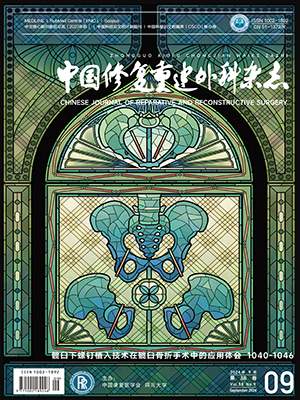Objective To explore the histological changes of bio-derived bone prepared by different methods after implantation, and to provide the scaffold material from xenogeneic animal for tissue engineering. Methods Theextremities of porcine femur were cut into 0.5 cm×0.5 cm×0.5 cm. Then they were divided into 5 groups according to different preparation methods: group A was fresh bone just repeatedly rinsed by saline; group B was degreased; group C was degreased and decalcificated; group D was degreased, acellular and decalcificated; group E wasdegreased and acellular. All the materials were implantated into femoral muscle pouch of rabbit after 25 kGy irradiation sterilization. The cell counting of
inflammatory cells and osteoclasts, HE and Masson staining, material degradation, collagen and new bone formation were observed at 2, 6, and 12 weeks postoperatively. Results The residue level of trace element in biomaterials prepared by different methods is in line with the standards. All the animals survived well. There were no tissue necrosis, fluid accumulation or inflammation at all implantation sites at each time point. The inflammatory cells counting was most in group A, and there was significant difference compared with other groups(P<0.05). There was no significant difference in osteoclasts counting among all groups. For the index of HE and Masson staining, collagen and new bone formation, groups C and D were best, group E was better, and groups A and B were worse. Conclusion The degreased, acellular and decalcificated porcine bone is better in degradation,bone formation, and lower inflammatory reaction, it can be used better scaffold material for tissue engineered bone.
Citation: WANG Yang,LI Xiuqun,HUANG Yun,et al.. HISTOLOGICAL OBSERVATION OF BIODERIVED BONE PREPARED BY DIFFERENTMETHODS AFTER IMPLANTATION. Chinese Journal of Reparative and Reconstructive Surgery, 2007, 21(9): 1003-1006. doi: Copy




